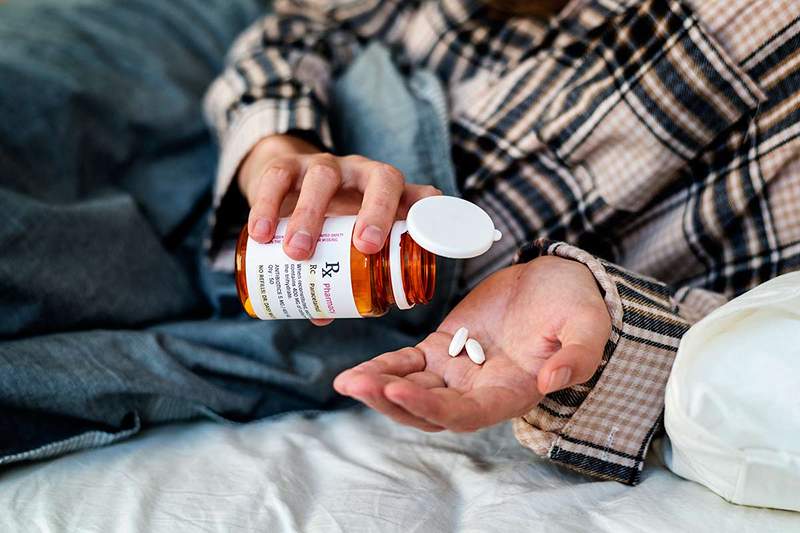Paracetamol mechanism of action and main effects

- 4072
- 890
- Austin Stokes
Paracetamol is one of the most used drugs worldwide at all ages. It is usually indicated in pain therapy, especially in postoperative stages. Its activity is analgesic and antipyretics. This means that it works to calm pain, as well as to reduce fever. But, unlike other medications, such as ibuprofen, paracetamol has no anti -inflammatory effects.
Content
Toggle- Origin of paracetamol
- What is paracetamol
- Paracetamol: Mechanism of Action and Posology
- Adverse effects of paracetamol
- Conclusions
- Bibliography
Origin of paracetamol
The first time that paracetamol was synthesized was in 1878 by Morse; However, it was von mering who began to use it in the clinic in 1887 as an analgesic.
Both paracetamol and phenacetine - also indicated to relieve pain and fever - have a common origin. However, after checking the toxic and carcinogenic effects, Phenacetin began to be removed from the market in 1978, Only the paracetamol remaining.
The subsequent studies of Brodie and Axelrod achieved that paracetamol or acetaminophen, as it is also known in some countries, was rediscovered and marketed in 1950 as an analgesic not opioid or steroidal. This is how phenacetine was replaced, and its high toxicity and negative impact on the kidneys, by paracetamol.
Today, thanks to the security and efficacy of paracetamol, This drug is used in almost everyone. His adverse reactions are scarce being possible to use it even during pregnancy and breastfeeding, always following the exact doses prescribed by the doctor.
What is paracetamol
Paracetamol, also known as acetaminophen, It is a medicine analgesic and antipyretic usually used to treat pain and fever. It is sold without a medical recipe in most countries and can be found in many different ways, such as tablets, capsules, liquids and suppositories.
It works by blocking the production of certain chemical substances in the body that cause pain and fever. It is believed that it acts in the central nervous system and peripheral tissues to produce its analgesic and antipyretic effect.
Paracetamol is one of the most used analgesics worldwide and is considered a safe and effective medication in therapeutic doses. It is especially useful for treating mild to moderate pain, such as headaches, muscle aches and teeth aches. It is also commonly used to treat fever associated with colds and flu.
 Biotina, what is it for?
Biotina, what is it for? Paracetamol: Mechanism of Action and Posology
According to Dr. Enrique Hernández-Cortez, in his study on this medicine, the mechanism of action of Paracetamol is that of Inhibit prostaglandins in the central nervous system, thus producing analgesia. Likewise, the paracetamol acts inhibiting heat regulation from the hypothalamus, which produces its antipyretic effect, through peripheral vasodilation and increase in heat dissipation in the body.
From this it is derived that the paracetamol can be used for the following conditions:
- Headache;
- Dental Dolores;
- Pains during menstruation;
- Postoperative pain;
- Osteomuscular pains, and other conditions that are in pain, such as arthritis;
- Fever;
- A cold;
- Nasal congestion;
- Sneezing;
- Bripal paintings.
This medicine is You can find in pharmacies in different presentations, such as effervescent tablets, envelopes, capsules, oral solution, suppositories and others. The available presentations of this drug include those of 325 mg, 500 mg, 650 and up to 1 g. However, it is common that, to each patient, considering their particular condition, the minimum dose that is effective to obtain the effect that is sought is administered.
Adults are usually indicated an oral daily dose that ranges between 500 and 1000 mg, every six or eight hours, depending on the intensity of pain or fever. In the case of children, medical staff evaluates their age and weight to determine the appropriate dose. They are usually indicated in their form of suppositories or in oral solution. The taste of the latter, usually, is pleasant and has good acceptance in the children, which facilitates the fulfillment of the treatment.
Likewise, the health provider may indicate the intake without accompanying the drug with food, so that they do not slow their absorption in the body.
The combination of paracetamol with other non -steroidal or opioid anti -inflammatory drugs is quite common, especially when you want to lessen the postoperative somatic pain.
The most recommended thing is to speak with the doctor and opt for the dose that is most comfortable, in order to meet the entire medication scheme and that the application of the treatment itself is successful.
Adverse effects of paracetamol
Although a safe and effective medication is considered in therapeutic doses, prolonged or higher doses of recommended can cause side effects. Besides, in high doses and could continuously produce interstitial nephropathy.
Among the most common side effects of paracetamol are:
- Hepatic injury: Paracetamol is mainly metabolized in the liver and excessive or prolonged consumption can cause liver damage. Hepatic damage can be serious and potentially deadly if not in time.
- Nausea and vomiting: These are common adverse reactions when taking paracetamol. They can be more common in people who have higher doses of the recommended.
- Rashes: Paracetamol can also cause allergic reactions that manifest as skin rashes. These reactions are unusual, but they can be serious in some cases.
- Stomach problems: Paracetamol can irritate stomach lining and cause problems such as stomach pain and diarrhea.
- Difficulty breathing: In rare cases, paracetamol can cause difficulty breathing or a severe allergic reaction that can be potentially deadly.
That is why doctors do not recommend exceeding the maximum dose per day. Those patients with anemia should also follow up, as well as those with lung, cardiac conditions or renal conditions.
Those who consume alcohol regularly must also take precautions, since they could be prone to liver damage. If it's someone who suffers from alcoholism, it is important that you let the doctor know.
Asthmatic patients should also have medical supervision to eat the drug.
Conclusions
Paracetamol has little interaction, which allows you to combine with other medications, always following medical recommendations. Your tolerance is also usually good.
In some cases, it can be indicated with other active ingredients to increase analgesic effects. But this should do it strictly the doctor.
Antigrips that are available in pharmacies often combine paracetamol with other decongestant or antihistamine compounds.
Although its use is safe, as mentioned, medical prescriptions should always be followed.
Abuse and dependence of benzodiazepines
Bibliography
- Clissold, s. P. (1986). Paracetamol and Phenacetin. Drugs, 32(4), 46-59.
- Graham, g. G., & Scott, K. F. (2005). MECHANISM OF Action of Paracetamol. American Journal of Therapeutics, 12(1), 46-55.
- Hernández-Cortez, e. (2016). Acetaminophen: the most used medication in pediatrics. Anesthesia in Mexico, 28(3), 1-4.
- Prescott, l. F. (1983). Overdosage Paracetamol. Drugs, 25(3), 290-314.

